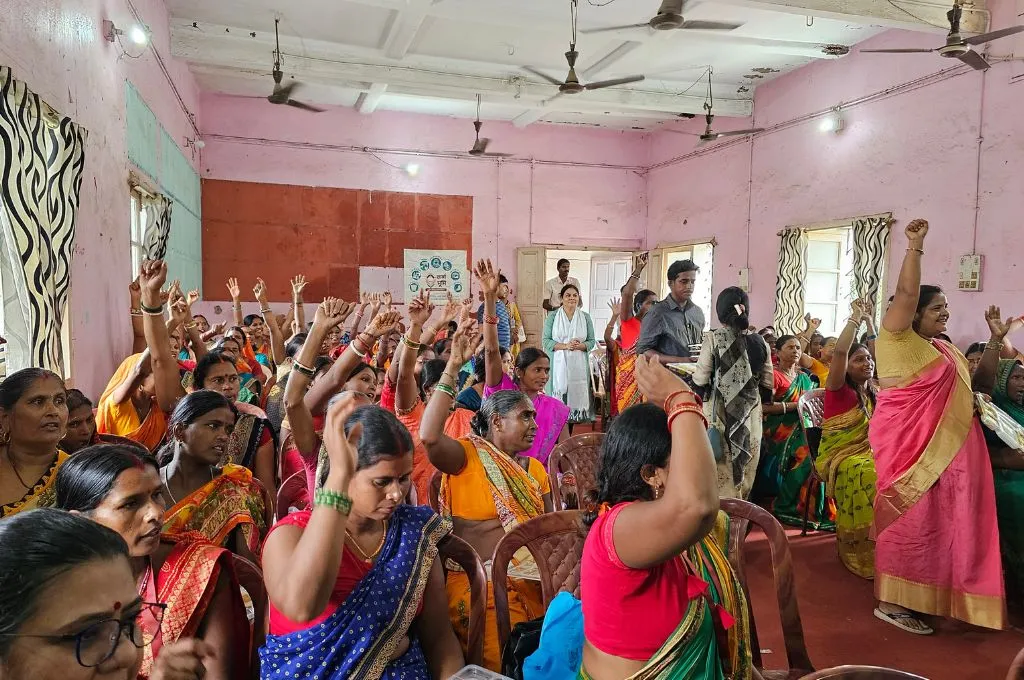Copyright idronline

The central scheme for 10,000 farmer producer organisations (FPOs) builds on the long history of India’s cooperative movement. In 2003, the Companies Act, 1965, was amended to address the shortcomings of traditional cooperatives and create more flexible and market-oriented entities in rural areas, while retaining the principles of member ownership by small and marginal farmers. FPOs must reflect on and learn from the successes and challenges of past cooperatives. Cooperatives have served as a vehicle for the development of sectors such as agriculture, credit, dairy, and handicrafts since the beginning of the 20th century. Over the decades, successful cooperatives, especially in dairy and sugar, witnessed major investments in supportive infrastructure, such as research, refrigeration and storage facilities, and transportation. The Institute for Rural Management Anand (IRMA) was established in 1979 to develop managerial capacity for cooperatives. These successes were gradual and grew through patient institution building, member capacity development, and steady market integration. However, many cooperatives were top-down and target-driven, which produced high numbers on paper but weak grassroots ownership. They grew bureaucratic, often burdened by procedural compliances and state oversight that slowed decision-making and reduced responsiveness to farmers’ needs. In several cases, wealthier farmers captured board and leadership roles and used these institutions to secure subsidies, credit, and inputs. Marginal and landless farmers faced exclusion and exploitation. Moreover, cooperatives often depended on the government for working capital. Government-backed co-ops had to, in return, include government officials on their boards, which deepened political interference and eroded community trust. Farmers engaged with cooperatives primarily to access government subsidies and inputs. As these incentives faded, so did their interest and participation. These challenges underscore the need to evaluate current approaches to implementing the FPO scheme and ensure that collectives take root in communities and achieve stable and sustainable growth. Lessons from cooperatives also warn against prioritising growth over member ownership, governance, and institutional robustness. Lessons for sustainable collectives In February 2025, the government announced that the target of 10,000 FPOs had been achieved. By June 2025, these organisations had generated a collective turnover of more than INR 5,035.50 crore. However, gaps in the scheme’s approach risk replicating some of the problems faced by earlier cooperatives. These challenges largely arise from issues related to community ownership and the institutional capacity of FPOs. Community ownership What makes a difference on the ground is whether producers see the institution as their own. Building this sense of ownership and community trust is a complex and slow process. 1. Starting slow Saroj Mahapatra, executive director of PRADAN, says, “A sense of ownership will take root only when there is intense planning with the community, using a bottom-up approach. The community must be part of identifying priorities and solutions, rather than just being recipients of a scheme.” PRADAN builds collectives from the ground up, starting with self-help groups (SHGs) and moving gradually to producer groups and FPOs. Anita Paul, former director for community initiatives at Pan Himalayan Grassroots Development Foundation, which works on holistic mountain development initiatives, says that the process of setting up the FPO began with organising the community to address water scarcity issues in the 1990s. This led to the formation of women’s groups, which then evolved into SHGs focused on savings and credit. Over time, women realised that these groups gave them a sense of collective identity, which strengthened their agency. By the early 2000s, the SHGs started livelihoods activities, adding value to farm produce and small-scale crafts. After nearly a decade of collaboration, the women expressed readiness to manage market-oriented work. They decided to formalise their collective effort, and, in 2009, registered the Mahila Umang Producer Company, which became one of the early women-led producer collectives in the region. 2. Ensuring member awareness and consensus building Founder-led start-ups are typically owned by one or a small group of founders. Decision-making is relatively straightforward in this context. The membership of FPOs, in contrast, can vary from 50 to 1,000 people. Unlike in private companies, where voting power depends on shareholding, FPOs follow the principle of ‘one member, one vote’, giving even smaller producers an equal voice. Moreover, decisions made by the board of directors, which usually has 10 to 15 members, need to be unanimous. Member awareness of rights and duties is, therefore, crucial for good governance. Without engaged and informed shareholders, an FPO’s decisions can reflect the individual interests of those with influence and power, while undermining the collective interests of the farmers. The board, thus, needs to hold regular meetings with the management team and the larger group of shareholders for mission alignment and conflict resolution. When decisions emerge from shared deliberation, they strengthen members’ sense of ownership and the social fabric of the enterprise. The interests of the producers can sometimes also conflict with those of the enterprise. For example, farmers might want seeds of different varieties, but for the FPO it could be financially viable to procure a large quantity of a single variety. In such instances, consensus building cannot be rushed. Producers must trust that collective choices will not disadvantage them, and leaders must balance efficiency with fairness, which builds trust among farmers. When decisions emerge from shared deliberation rather than top-down directives, they strengthen members’ sense of ownership and the social fabric of the enterprise. Anita says that it took many conversations on the terms of engagement with all members for Umang to succeed as a community-owned social enterprise. 3. Navigating socio-economic disparities and biases Meaningful community ownership faces its own hurdles. Socio-political norms and hierarchies, such as gender and caste disparities, impact the running of FPOs. For instance, market vendors may sideline female board members due to existing biases. At one FPO, a board member from a marginalised caste had financial skills and interest but was overlooked and excluded by other members. They even avoided visiting her home and village for events. The Women’s Enterprise Support System (WESS), developed by SEWA Bharat and SEWA Cooperative Federation to incubate and accelerate collective enterprises, along with the management team, had to mediate to resolve this issue. It took years of work before shareholders began to acknowledge and appreciate the financial and community-mobilising skills that this member brought to the table. Another challenge emerges as member engagement stabilises. Anita says, “For an organisation to remain young, churning has to happen in the SHGs, board of directors, and the team of professionals comprising local leadership. Who is going to do that capacity building?” Institutional capacity The 10,000 FPOs scheme’s focus on registration numbers and targets has resulted in the formation of many organisations without prior preparation for compliance. FPOs currently lack systemic capacities for maintaining records, filing returns, and developing viable business plans. This is important because FPOs can face fines and heavy penalties if they fail to pay taxes or submit the minutes from board meetings on time. The main budget of the scheme also does not include investments for infrastructure and services that FPOs need to do business—such as warehousing, logistics, credit, market linkages, or marketing—and instead relies heavily on market forces and convergence with other government schemes. Long-term, hands-on facilitation is required to embed governance and collective decision-making in the community. FPOs depend on external cluster-based business organisations (CBBOs), which include nonprofits and civil society organisations (CSOs), for capacity building, compliance, and market orientation. Technical agencies, nonprofits, and CSOs support the board and executive team in growing membership; governance; decision-making; legal, financial, and statutory compliance tasks; and business strategy and operations. While these milestones are achievable, the pressure to meet them within the three-to-five-year timeline set by the policy is not feasible. Breaking even in three years may be possible, but raising awareness, building capacity, and enabling autonomous governance takes longer. Most capacity building happens on the job. It involves allowing the community to safely take risks and learn from them. Small producers may be risk-averse due to limited social and financial capital. When SEWA proposed a plan to increase the procurement of paddy for a Bihar-based FPO from 6 metric tonnes to 60 metric tonnes, it faced pushback from the board. The FPO, with 770 women farmers, did not believe it was possible, and hesitated to take a loan for it. It took months to convince them. Only after they managed 65 metric tonnes did the board and members gain confidence in large-scale procurement. Saroj says, “Long-term, hands-on facilitation is required to embed governance and collective decision-making in the community.” The WESS model demonstrates that sustained technical and institutional support, often over five to eight years, is essential. Rethinking policy “Without an enabling environment of supportive markets and infrastructure to strengthen backward and forward linkages, FPOs may not be able to achieve their full potential,” Anita says. Even independent enterprises may face crises later due to technological developments, market obsolescence of the product, or natural catastrophes. 1. Steady and phased growth For the sustainability of FPOs, policies must adopt phased approach—incubation (member awareness and trust building), registration, basic training and systems development, growth/acceleration, maturity, more market linkages, and expanding operations at a larger scale. Each phase should include tailored support systems, clear goals, and appropriate financial instruments. The transition from one stage to the next could depend on demonstrated governance maturity and member engagement. A sequenced pathway, over time, would allow ownership and risk appetite to grow. 2. Infrastructural support In the case of cooperatives, infrastructural support stabilised the dairy and sugar industries. The existing budget falls short of developing these assets for FPOs. Just as start-ups have access to incubators and accelerators for growth, collectives should also benefit from an enabling ecosystem that is suited to their unique needs, instead of a one-size-fits-all model. Again, as IRMA was established to professionalise and stabilise the cooperative sector, regional or national institutions can support FPOs. Policy can also establish incubators and enterprise support systems that provide embedded facilitation, compliance support, market intelligence, and leadership development designed for the needs of small producers and farmers, rather than relying on temporary CBBO arrangements. 3. Diversified and resilient entities Successful cooperatives have often centred on single commodities. However, agricultural collectives require diversification, given decreasing landholdings and climate-related volatilities in the sector. Saroj says, “With 300 members (the minimum requirement in the policy), the economies of scale will never improve. FPOs need sufficient membership to ensure financial viability, and the context of each state or region must guide these numbers.” For example, in states such as Uttar Pradesh or Maharashtra, viable FPOs may need 2,500–3,000 members, whereas in the Northeast, smaller numbers may be more realistic given population density. Federated structures play a key role. A federated FPO model (producer group-FPO-district-state), supported by policy, could help small producers aggregate volumes, strengthen market linkages, enable joint infrastructure ownership, and share services such as logistics and audits while reducing the compliance burden on individual FPOs. Finally, a strong FPO ecosystem requires strategic convergence across ministries and departments (agriculture, rural development, cooperation, food processing, and others) to align policy intent, budgets, and schemes. This approach creates coherent value chains, streamlines funding and technical support, and bridges policy silos that currently limit FPO growth. It can also ensure that infrastructure, credit, and capacity-building investments advance together rather than in isolation. A truly enabling and vibrant community of FPOs also demands for the government, civil society, technical partners, and market players to come together. Without a more synchronised and holistic approach, which places community ownership and governance first, we risk repeating problems faced by the cooperative movement. Understand how the 10,000 FPOs scheme sidelines women farmers. Read more about the infrastructure and support needed to enhance farmers’ incomes. Learn more about farmer producer companies (FPCs) in India and how they can be strengthened.



